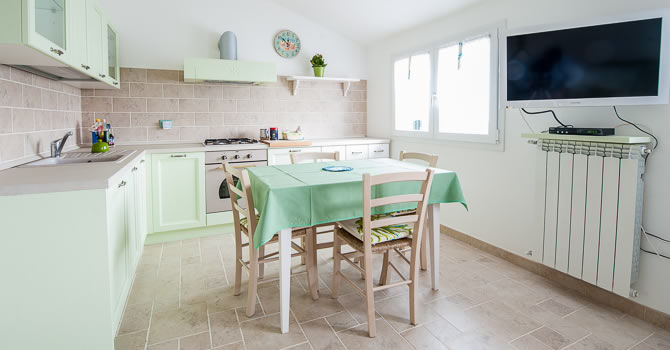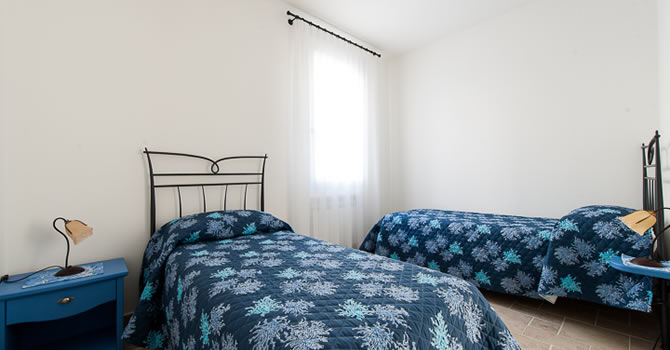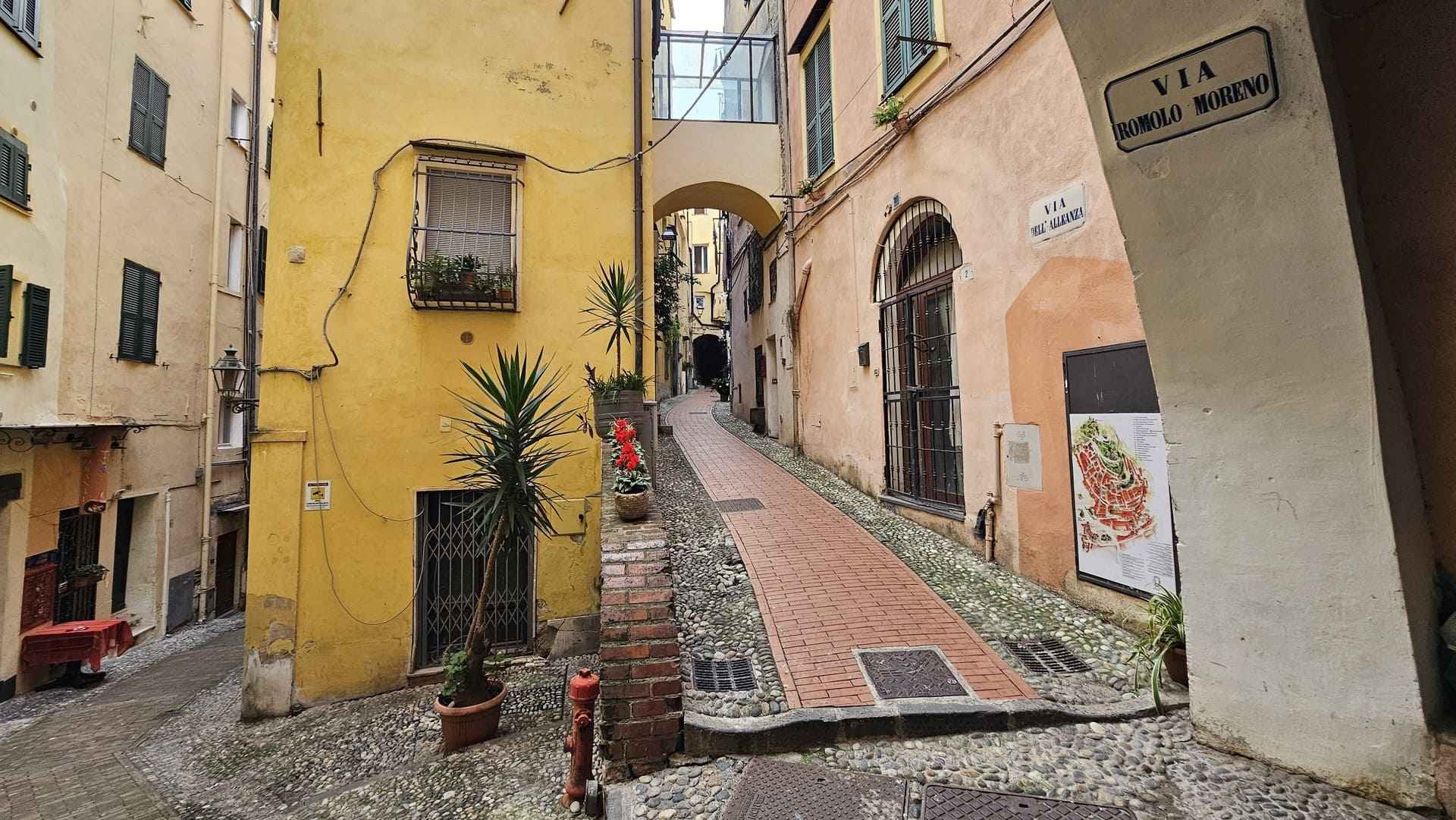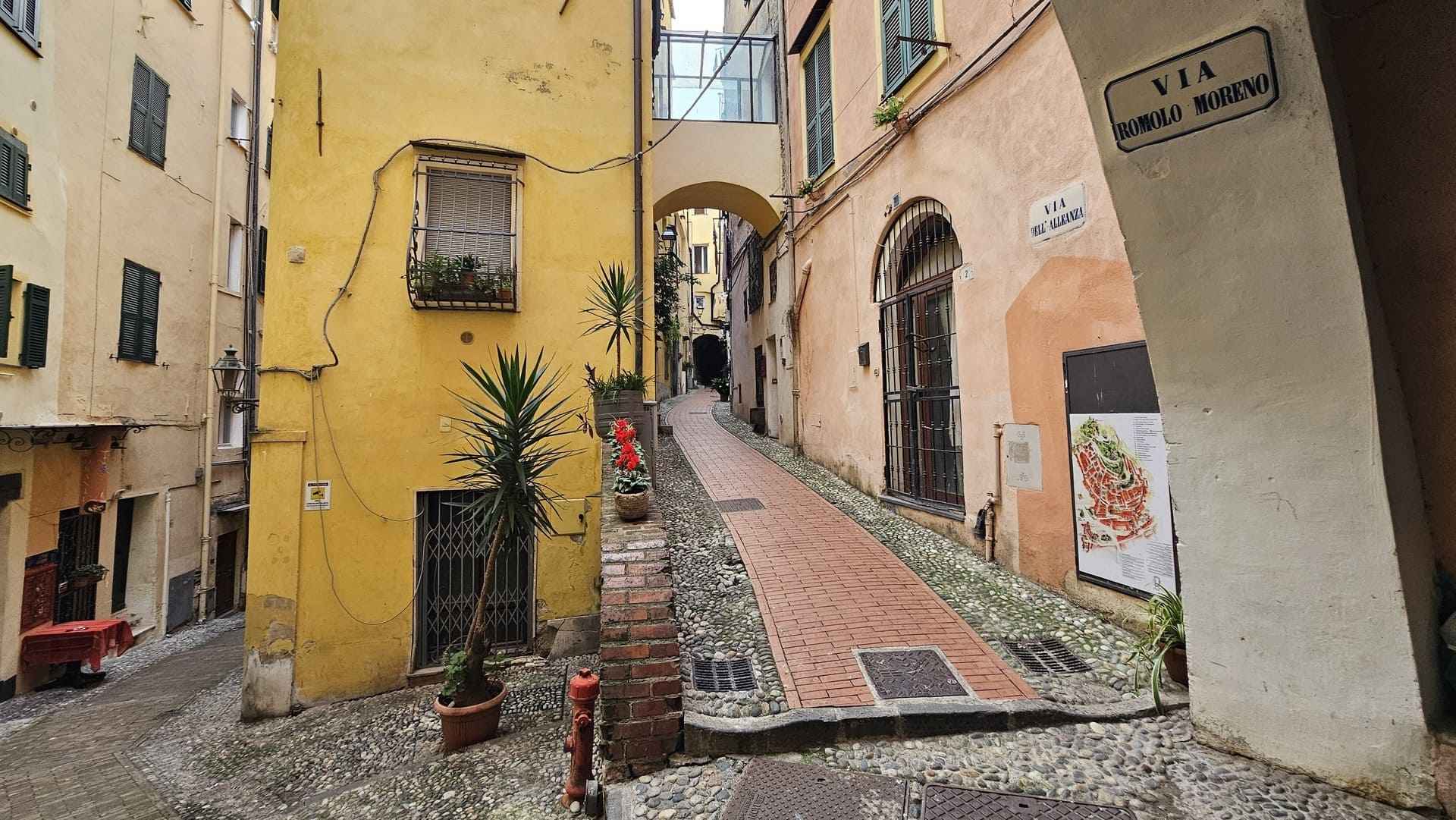
Villages of Liguria
Discovering Perinaldo: the village and the astronomical observatory
September 02, 2023
In Liguria, hidden among the green hills of the Imperia hinterland, overlooking the blue expanse of the sea and enriched by the vibrant tones of flowering mimosas, stands the village of Perinaldo.
This picturesque town is renowned for its gastronomic delicacies of the highest quality, particularly its PDO extra virgin olive oil and Perinaldo artichoke, the latter of which has been awarded the title of Slow Food Presidium. Every May, the village hosts the "Perinaldo Artichoke and Taggiasca Extra Virgin Olive Oil Gastronomic Review," a vibrant market that celebrates local flavors and traditions.
The village is home to an important Astronomical Observatory, dedicated to the illustrious astronomer Gian Domenico Cassini, a local son and court scientist of the ancient Kingdom of France. Through its telescopes, you can peer into the secrets of the night sky and appreciate the celestial beauty of the Ligurian hinterland.
How to get to Perinaldo
Perinaldo is located at a distance of about 60 kilometers from Le Girandole agritourism, in Diano Marina (discover our farmholidays). To get to the village, you can take a nice scenic drive. From the harmholidays, it is recommended to take the A10 highway and continue to the Bordighera exit. From there, the road leads through the picturesque towns of Vallecrosia, San Biagio della Cima and Soldano as you head inland until you reach Perinaldo.
What to see in the village of Perinaldo
What to see in Perinaldo? There are several attractions of historical and cultural interest to visit in this village. An unmissable event is represented by the Fai Day(Fondo Ambiente Italiano), during which usually reserved spaces are opened to the public.
Fai youngsters tell the architecture of Perinaldo
This prestigious initiative provides the opportunity to immerse oneself in the historical atmosphere of the village. Guided by enthusiastic volunteers, the visit proves to be an experience that allows one to discover the peculiarities of the different places.
Fai youngsters tell the story of Perinaldo
Maraldi Castle
One of the fascinating places to explore during a visit to Perinaldo is Maraldi Castle. Although not a castle in the traditional sense, this stately home represents an important milestone in the history of the village. Belonging to the prestigious Maraldi family, one of Perinaldo's most influential families, the building is also famous for being the birthplace of one of the most famous astronomers, Gian Domenico Cassini.
Located in the centre of the village, this building is situated on a picturesque hill ridge, with a panoramic view stretching as far as Bordighera.
Although Maraldi Castle does not stand out in the urban panorama of Perinaldo's historic centre, it represents a fundamental historical memory. Although its current structure dates back to a transformation in 1790, it preserves the signs of the important Maraldi family, including the heraldic coats of arms.
During the guided tour, you walk through the rooms of the residence, passing from the entrance staircase decorated with coats of arms and a painting by Cassini, to the large terrace offering a fascinating view of the Church of the Visitation and Meridiana. One then explores the different rooms, including the drawing room, kitchen and bedrooms, including a small worship area inside the castle. A plaque recalls that Napoleon stayed here with General Massena before the Battle of Millesimo in 1796.

A walk through the village streets
A walk through the charming streets of Perinaldo is not to be missed. In addition to discovering the architecture of the village, you can also admire the view over the valley: looking south, the picturesque coast of Vallecrosia is revealed, while the northern side offers a view of well-known villages such as Apricale and Bajardo.
It is worth pausing to admire the historical plaques that can be found along the village streets. They are in fact true historical archives, narrating crucial moments in the history of Perinaldo. From the inauguration of the local band in the 1930s to the dedication of the monument to the fallen of the First World War, the plaques reveal the salient features of community life. In Via Fontana, one of these plaques depicts a group of people next to a public fountain, with a period sign prohibiting the use of water for livestock and other purposes that could pollute the precious water resource.
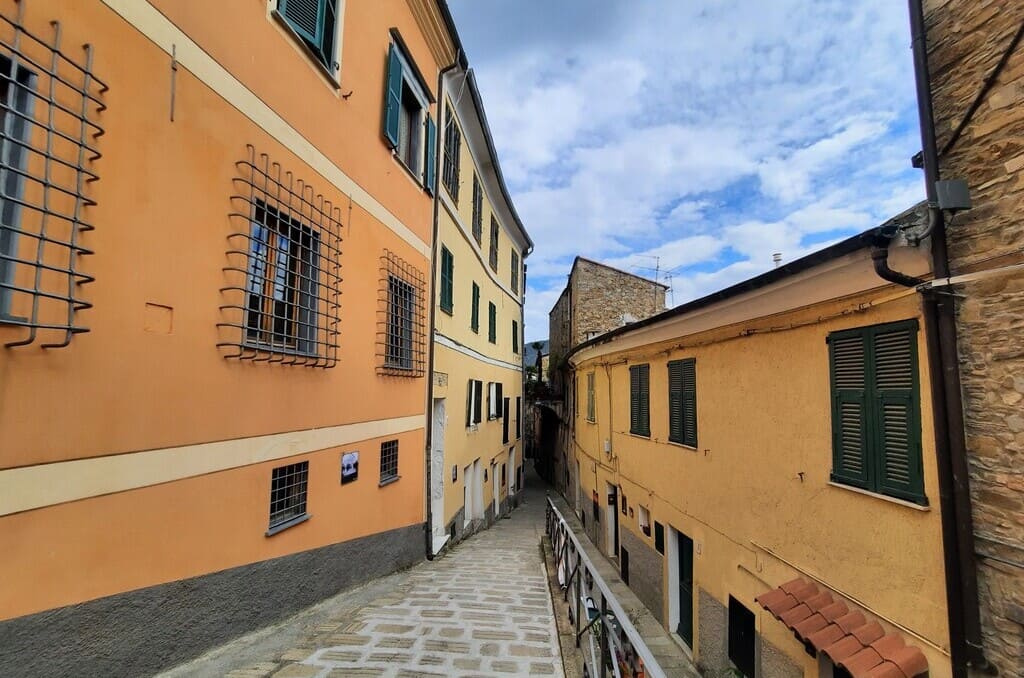
The Via Affrescata
Among the characteristic caruggi of Perinaldo, one cannot miss a visit to the extraordinary Via Affrescata. The street is divided into two parts, each telling important stories from the lives of local protagonists.
In the first section, the street comes alive with a series of paintings dedicated to Gian Domenico Cassini. Prominent among them is a fresco depicting his family tree, with ancestors and descendants, and others narrating the different stages of his existence. From his studies in Genoa and his years in Bologna to his time in France, each brushstroke reveals a chapter of his life. A special fresco celebrates Cassini's discovery of four Saturn satellites, Jupiter's great red spot and the unique rotational characteristics of this gaseous planet.
There is also a fresco depicting Nice. This section touches on the history of the Maraldis, who played a significant role as cartographers for the Savoy family. It is interesting to note that until 1860, Nice was part of the Kingdom of Sardinia, before being ceded to France along with the Savoy region. This historical link was fuelled by the trade that flourished between the far west and Nice, then an important port of the Kingdom of Sardinia.
The route through the Via Affrescata culminates in a stylised representation of the Porta Alchemica, a symbol laden with meaning. This passage represents a crucial stage for the alchemist philosophers, who sought to shape matter itself.
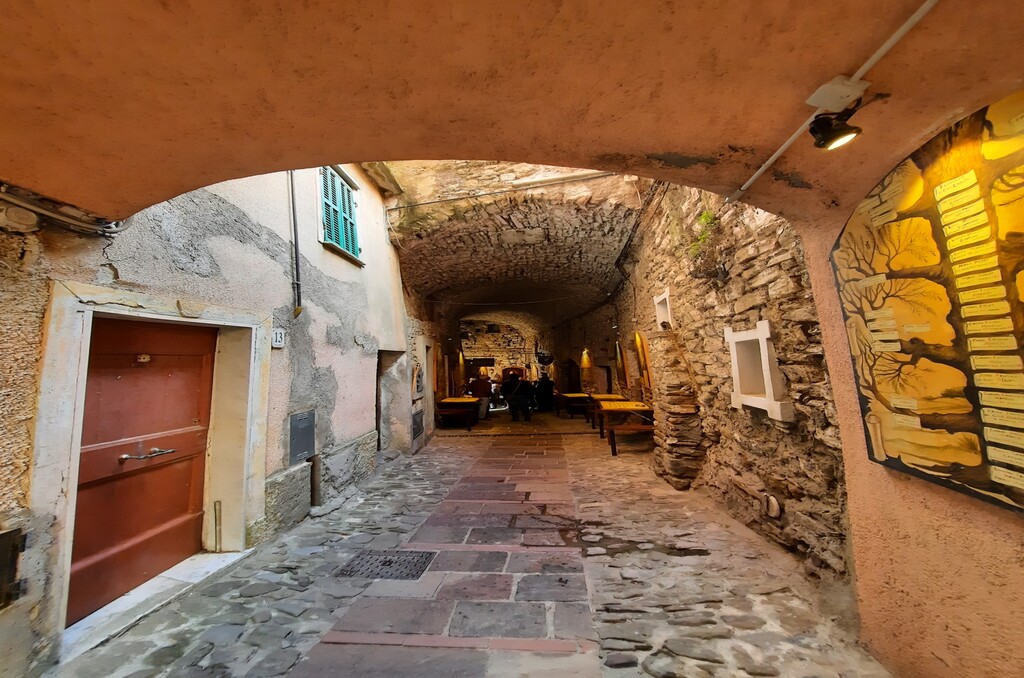
The parish church of San Nicola di Bari
Reaching the main square of the village, one comes across the Parish Church of San Nicola di Bari. The church is the seat of the parish of the same name within the vicariate of Bordighera and Valle Nervia, belonging to the diocese of Ventimiglia-San Remo.
The roots of this church date back to the 11th century, when it was built on a pre-existing structure. However, its current configuration was shaped between 1465 and 1480 by skilled antelami masters based in Taggia. The interior houses a precious work: a wooden crucifix dated between the sixth and seventh decade of the 15th century, the work of an artist active in western Liguria. This work, of considerable artistic value, reveals similarities with the one in the Church of Nostra Signora della Consolazione in Ventimiglia.
An important contribution to the decoration of the church is the canvas offered by the illustrious astronomer Giovanni Domenico Cassini to the Suffragio altar in 1672. This work, attributed to the school of Guercino, is believed to have been painted by Bartolomeo Gennari.

Piazza Castello
Piazza Castello dates back to the 16th century. In the past this square was called Piazza del Rogo because, in 1602, a certain Pirinetta Pizia was burnt after a trial for witchcraft: she was the only woman burnt and accused of witchcraft in the whole province of Imperia.
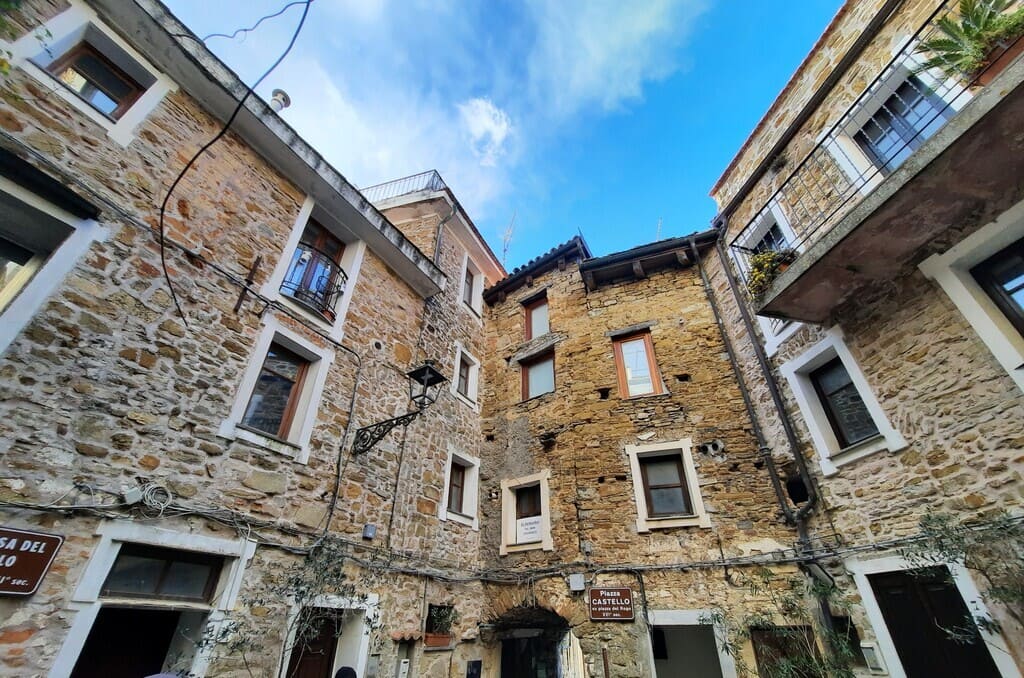
Those already familiar with the story will know that the alleged witches of Triora were imprisoned but not killed. Pirinetta Pizia had three children to support and, to support her family financially, she used to donate her body to the men of Perinaldo. For this reason, some women complained, leading to the woman's condemnation.
The story of Pirinetta Pizia
The Church of the Visitation and the Sundial
Among the caruggi of Perinaldo stands a sanctuary with a deep connection to time and the constellations: the Church of the Visitation and the Sundial, dating back to the 17th century. Within its walls hides a fascinating and celestial secret. Here, right at the building, the Cassini meridian, whose longitudinal value lies at 7° and 40′ East, crosses.
However, it is the gnomonic hole that steals the show. In a clever dance between the sun and the architecture, this detail allows the silhouette of the sun to be projected onto the floor of the church in a spectacle that changes day by day. When the sun, at its zenith at midday, changes position in the sky, the gnomonic hole tells a unique story. A line drawn on the floor traces the solar path from 1 January to 31 December each year, highlighting the dates of the equinoxes and solstices. The shadow dancing on the line varies in length, a choreography of light that changes with the seasons. In the winter and autumn months, the sun projects a longer path, while in summer and spring the dance of light is shorter.

The Astronomical Observatory
The G. D. Cassini Municipal Astronomical Observatory is one of the main centres of astronomical education in Italy. Featuring two imposing domes, a planetarium, solar instruments, virtual reality, the Cassini Museum and scientific installations scattered throughout the village, the observatory offers an immersive experience suitable for all ages.
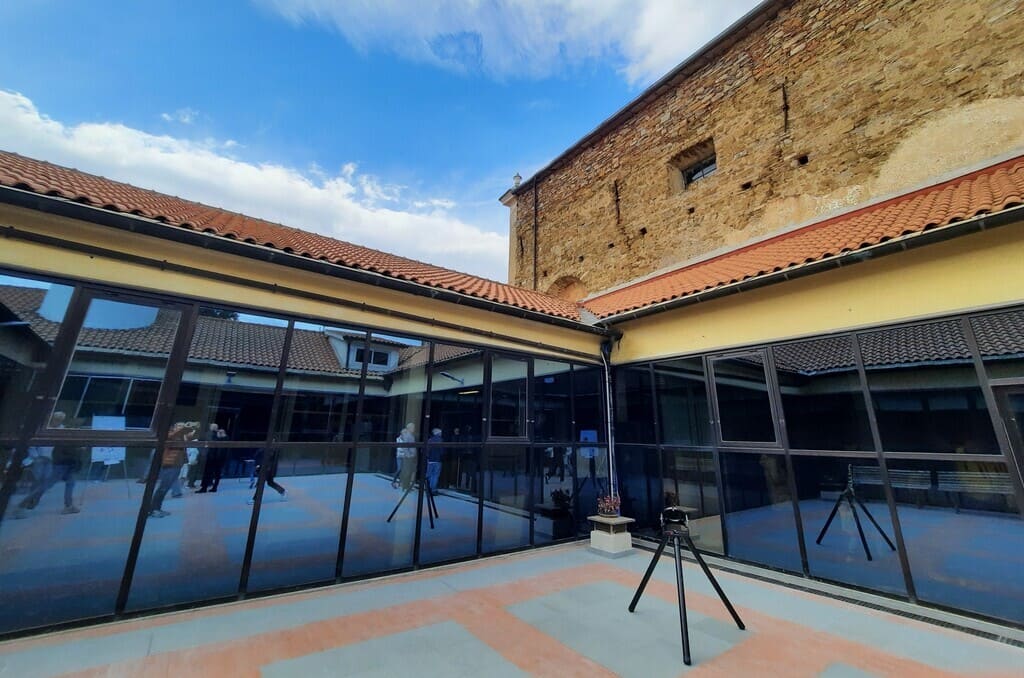
A reference point for astronomical observations, it offers regular openings throughout the year. Enthusiasts can participate in public observations and educational events covering a wide range of astronomical topics. The observatory houses two domes, a planetarium and solar instruments, providing a comprehensive base for exploring the night sky and celestial dynamics.
Activities extend indoors and outdoors: observations take place in the domes and courtyards, and animations involve visitors with equipment such as the Helioscope, sundials and models. The Council Chamber becomes a projection venue, with the inflatable Planetarium offering an immersive experience, and slide shows and lectures enriching visitors' knowledge.
The observatory's powerful equipment includes a Newtonian reflector with a 380 mm aperture and 1700 mm focal length, perfect for observations of nebulae and galaxies. A Schmidt-Cassegrain reflector with an aperture of 203 mm and focal length of 2030 mm is optimised for the Moon and planets, and there is also an instrument dedicated to observing the Sun and its chromosphere. Educational activities are transformed into engaging workshops exploring the Sun, Moon, stars and planets, with the help of explanatory panels, photos, models and self-made educational materials.
Listen to all podcasts published on our official channels:
